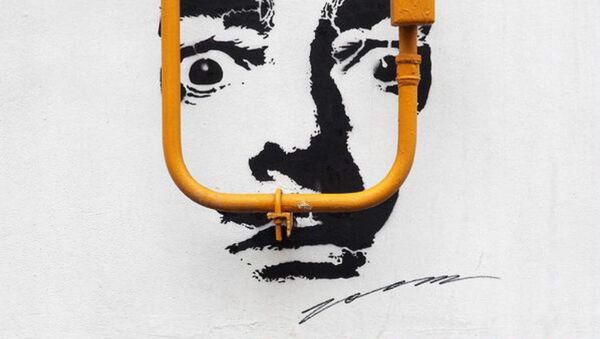Graffiti in Moscow has already evolved into a contemporary art form, one that has been harnessed by commercial and social advertisers in the Russian capital, according to RT.
Moscow street artist Stas Dobriy told RT that "what we currently see on the city's walls and fences reflects the current events in Russia." He said that he does not like graffiti-style advertising and he supports the idea of "clean facades."
In a separate interview with RT, Vladimir Yevstafyev of the Russian Presidential Academy of National Economy and Public Administration explained why society had decided to perceive graffiti in a different way.
Очередной #АртФасад появился на Зубовском бульваре 31. https://t.co/PhpyLl9xhR pic.twitter.com/uVhaoEJ5o3
— Аэрофлот (@aeroflot) 20 января 2016 г.
"Every epoch gives us its own innovations in the field of visual tools and techniques. 100 years ago, for example, everyone was excited about Czech Art Nouveau painter and decorative artist Alfons Mucha," he said.
Drawing graffiti on the facade of a building does not require any special permission from the city authorities, according to Eduard Korolev, deputy head of Moscow's department of media and advertising.
"Such a document is unnecessary. What you need is the consent of the owner of the building," he said.
Interestingly, a few days ago a graffiti-style portrait of prominent Spanish surrealist painter Salvador Dali appeared on the facade of a house on Mytnaya Street in central Moscow. The graffiti was painted by a local artist who goes by the nickname "Zoom".


